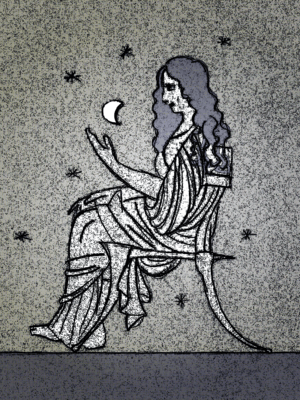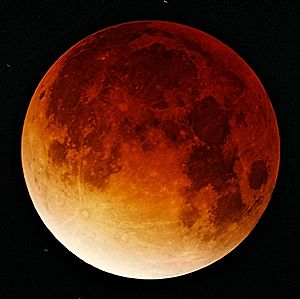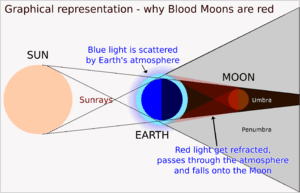Aglaonice facts for kids
Aglaonice or Aganice of Thessaly was a smart Greek astronomer from a very long time ago (around 200-100 BC). She lived in a place called Thessaly in Ancient Greece. People knew her as the daughter of Hegetor.
Aglaonice was famous because she could predict when the Moon would seem to disappear from the sky. This event is what we now call a lunar eclipse. Because she knew when these amazing events would happen, many people thought she was a sorceress or had magical powers.
A Greek saying about her was: "Yes, as the Moon obeys Aglaonice." Other women in Thessaly who also seemed to have special knowledge about the stars were sometimes called "witches of Thessaly."
Contents
What Aglaonice Knew About the Moon
The ancient writer Plutarch wrote about Aglaonice. He said she understood when the Moon would be covered by the Earth's shadow. By knowing this ahead of time, she could tell people when the Moon would "disappear." This made people believe she was actually "drawing down the moon" from the sky.
A lunar eclipse happens when the Earth passes directly between the Sun and the Moon. This blocks the Sun's light from reaching the Moon, making the Moon look dark or reddish.
Why People Thought It Was Magic
Today, we know that lunar eclipses are natural events. But in ancient times, people didn't understand them. When Aglaonice predicted an eclipse, it seemed like magic to them.
Sometimes, during a lunar eclipse, the Moon doesn't completely vanish. It might just change color to a reddish or coppery shade. But stories about Aglaonice's predictions suggest the Moon seemed to disappear completely.
Scientists today think that during Aglaonice's time, some lunar eclipses might have been unusually dark. This could have been due to things like dust in the air from volcanoes. When the Moon became very dark, it would have looked like it was "completely devoured." This would have made Aglaonice's predictions even more astonishing to people who didn't know about astronomy.
Aglaonice's Influence Today
Aglaonice's story has influenced different things even today:
- Modern Rituals: Some modern spiritual groups, like those who follow the Wiccan religion, have a ritual called "Drawing down the Moon." This ritual is inspired by the ancient idea of bringing the Moon's energy closer.
- Books: A famous book about modern paganism, called Drawing Down the Moon, was written by Margot Adler in 1979.
- Space: There is a crater on the planet Venus named after Aglaonice.
- Movies and Art: Aglaonice is a character in the film Orpheus by Jean Cocteau. She is also honored in a large art piece called The Dinner Party by Judy Chicago, where her name is on the "Heritage Floor."
See also
 In Spanish: Aglaonice para niños
In Spanish: Aglaonice para niños





